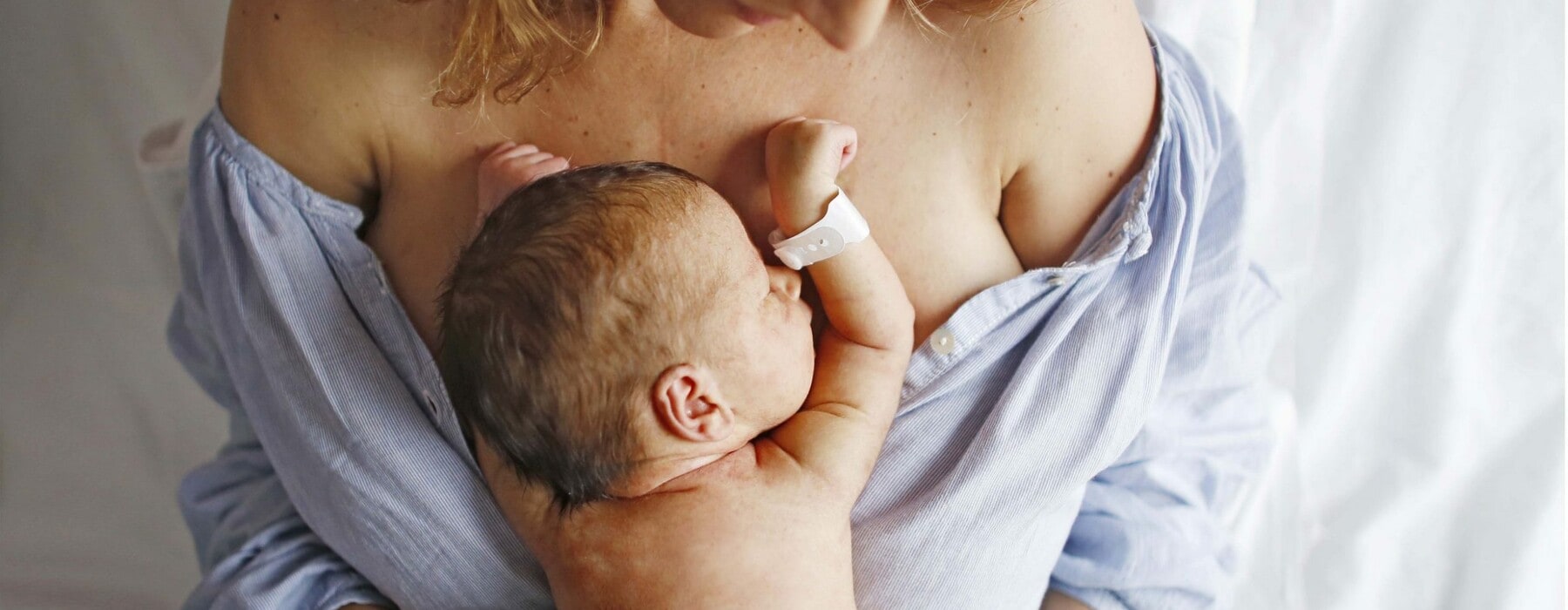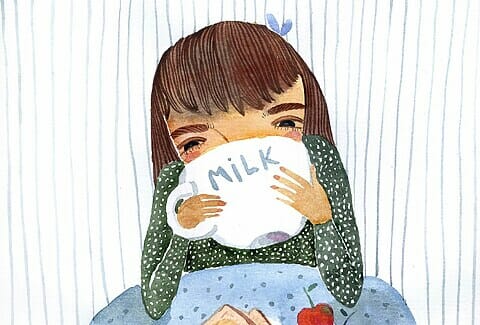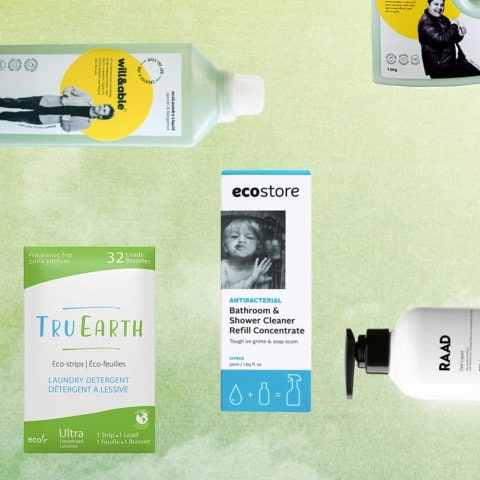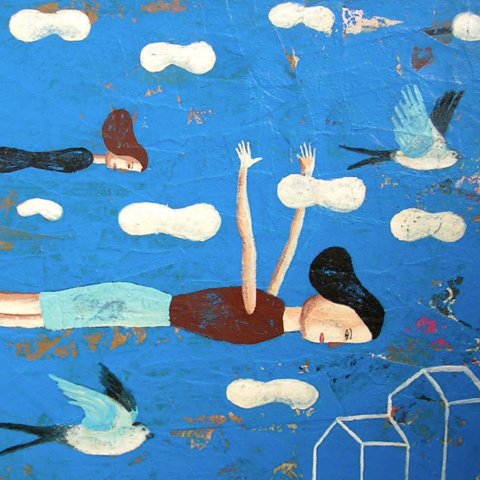When we are born our mothers give us a starter kit of beneficial microbes that help us build our immune system. But research shows that babies born by Caesarean section are missing out on this birthday present. Rachel Clare investigates the science behind vaginal seeding and its potential to improve health outcomes of babies born by C-section.
What would we do without our mums? They give us love, time and energy – but their first gift to us is during childbirth, when we exit the sterile environment of the womb and they give us a smorgasbord of their microbes on our way out through the birth canal. Through this “vaginal baptism” we receive a starter kit of health-boosting goodies that colonises our gastrointestinal tract and helps protect us from harmful diseases as we embark on our journey into life on the outside. Essentially, our mothers give us everything we need to create our own microbiome.
Your body is a (microbial) wonderland
Our bodies are host to a thriving ecosystem of approximately 100 trillion micro-organisms, known collectively as the microbiome. In fact, the number of microbes inside our bodies is almost equivalent to the number of human cells. Members of this diverse community include bacteria, viruses, fungi, protozoa and archaea. They help us fight infection, develop our immune system, produce vitamins, regulate bodily functions and they influence our behaviour, including our appetite. They reside in different parts of our bodies, such as on the skin, in the mouth and vagina but you’ll encounter most of them in the gut, where they perform a range of crucial tasks including helping us to digest our food.
Baby’s birth day
While vaginally born babies have a microbiota resembling their mother’s vaginal flora, containing bacteria such as immune-boosting Bifidobacterium and Bacteroides, babies born by C-section carry microbes more similar to those found on skin and, to a lesser extent, their early environment, which can include harmful bacteria found in hospitals.
In a study published in Nature in 2019, stool samples taken from 600 newborns showed that babies born by C-section were carrying Enterococcus, Enterobacter and Klebsiella bacteria, which are associated with hospital-acquired infections.
Studies have also shown that C-section delivery is associated with a higher risk of health issues, the greatest being childhood obesity. However, findings from different studies are inconsistent, with some studies suggesting there is no connection between obesity and C-section, and others, including a US study, indicating that the risk could be as high as 64 percent.
Furthermore, a Danish study of 2 million children born between 1977 and 2012 also showed that babies born by C-section had a higher risk of developing asthma, eczema, inflammatory bowel disease, coeliac disease and leukaemia, and a Swedish study of 1 million children, published in 2018, showed that the potential of developing food allergies was 21 percent higher.
Of course, these are just modestly increased risks, so mothers whose babies are delivered by C-section shouldn’t worry that their children are destined to develop these conditions. Breast milk also plays a huge role in the development of an infant’s microbiome, plus babies receive beneficial microbes from skin-to-skin contact with their mothers.
While there’s no doubt that mode of delivery and diet in early life can have important implications for our later health, a study from the University of Gothenburg in Sweden, published this year, showed that while C-section-delivered infants had a less diverse gut microbiota at four months old, by the ages of three and five the gap had almost disappeared. However, the researchers concluded that intestinal microbiota is still incomplete at the age of five, with rates of maturation varying from child to child.
Sharing the good bugs
With up to one in three children being delivered by C-section in many countries – and approximately one in four in New Zealand – scientists started wondering if they could improve health outcomes for babies delivered by C-section by restoring their microbiome to one resembling a baby’s that has been naturally “seeded” with their mother’s vaginal microbiota.
One way of doing this is via a process known as “vaginal seeding”, or “microbirthing”, where a piece of cotton gauze is incubated in the mother’s vagina for up to an hour before the C-section, then swabbed over the baby’s mouth, face and body immediately after delivery.
Scientists started wondering if they could improve health outcomes for babies delivered by C-section by restoring their microbiome to one resembling a baby’s that has been “seeded” with their mother’s vaginal microbiota.
In a very small pilot study, the results of which were published in Nature Medicine in 2016, Professor Maria Dominguez-Bello and her team at Rutgers University in the US demonstrated that at one month old, four vaginally swabbed babies delivered by C-section had a microbiota that was more similar to the seven vaginally born babies than to seven babies in the study who underwent a standard C-section birth. However, they only tested their skin, anal area and mouth rather than the infants’ faecal samples, which would show what was happening in the all-important gut microbiome.
Is it risky?
A 2014 documentary Microbirth led to a spate of articles in mainstream media, along with interest from pregnant woman asking if their babies could be seeded if they had a C-section. Concerned medical experts, including the American College of Obstetricians and Gynecologists and the British Medical Journal published statements saying they didn’t condone it due to a lack of research and risk factors if a mother is harbouring bacteria such as group B streptococcus (a common bacteria found in the vagina and lower intestine that is usually harmless to women but can cause serious infections in babies) or STIs such as herpes and syphilis, which could also cause long-term damage to infants. However, while this is the case, it didn’t account for the fact that if babies are born vaginally, they can be exposed to these harmful bacteria anyway.
So, does it actually work?
Due to increased interest in vaginal seeding from pregnant women, particularly after the Rutgers University pilot study indicated there could potentially be benefits, further studies have been undertaken, including in Aotearoa. The University of Auckland’s Liggins Institute has just published the results of its ECOBABe (Early Colonisation with Bacteria After Birth) study, which aimed to restore the microbiome of C-section-born infants. Rather than swabbing the babies with gauze containing their mother’s vaginal bacteria, the ECOBABe team mixed the gauze containing the maternal vaginal microbes in sterile water, then applied it orally via a syringe into the baby’s mouth.
“We wanted the bacteria to go more directly into the gut as opposed to the swabbing technique, which is applying it everywhere, but not putting it into the gut,” says the study’s lead, Professor Wayne Cutfield. “An analogy would be if you were wanting to grow trees, you can sprinkle seeds on the motorway and the odd one might break through the tarmac and grow, or you can dig a hole and fertilise it and bingo they all grow. So it could be a much more focused approach. It was easily scaled and a procedure that midwives could do at delivery if it was successful.”
Of the 47 Auckland-based newborns in the study, 25 were delivered by elective C-section, and of those, 12 received the solution seeded with their mother’s microbes, while 13 received a placebo.
However, stool samples taken at one and three months old showed that there were no gut microbiome differences between the C-section infants who received the treatment and those who didn’t. Compared to the 22 vaginally born babies, all the C-section-born infants had lower levels of protective Bacteroides species.
Brooke Wilson, one of the study’s researchers, explains, “When we think about this a bit more, Bacteroides species aren’t actually that common within the vaginal microbiome. They’re actually more commonly found in the stool as members of the gut microbiome. We’ve been focusing on the mother’s vaginal microbes, but potentially when the baby’s coming out of the vagina it’s exposed to the anal microbes and that’s when the seeding happens.”
The next step
If vaginal seeding is a new concept for you, get your head around faecal seeding – where beneficial microbes are transferred via poo. After observing other studies where vaginal seeding hadn’t successfully changed infants’ gut microbiome, scientist at the University of Helsinki had some success with this method in a study that was published in 2020.
After carefully screening 17 pregnant women, and identifying seven with pathogen-free faecal samples, their faecal matter was mixed with their breast milk and fed to their newborns. At three weeks old, these babies had microbiomes more similar to vaginally born babies, with abundant amounts of Bacteroides species.
Wayne Cutfield says the logistics of carrying out a larger study on faecal seeding are complicated, as not only does screening take several weeks but there are ethical issues.
“Certainly when you’re talking about research tools, if you do something for theoretical benefits that causes a really serious infection to the baby, that’s a completely unacceptable outcome,” he says. “You can argue that even though they might have been exposed to it naturally if born vaginally,” says Brooke Wilson, “there’s still an ethical question about the right to potentially transfer something that could be pathogenic.”
Antibiotics, which all women receive following a C-section, also play a role in altering an infant’s microbiome, with studies showing that vaginally born babies who have been exposed to antibiotics, perhaps due to their mother having a group B strep infection, have a microbiome more similar to a baby born by C-section. “We know that antibiotics can have a tremendous effect on the microbiome,” says Wayne. “And we need to unbundle whether the antibiotics are a bigger risk than the C-section itself in terms of creating the risk of obesity.” One way to help eliminate the transmission of antibiotics from mother to infant is to give them to the mother after the umbilical cord has been clamped.
Another complicating factor, says Wayne, is that it’s hard to recruit women for these types of studies. “There are a lot of women who are interested, but they want the treatment – they don’t want to be randomised and end up getting the placebo. And their philosophy is, ‘Well, if I’m not going to get the treatment, I’ll just do it myself or I’ll get it done myself.’ Plus a whole bunch of mothers will get screened out because of the risk of infection.”
Although the study has now come to an end, the ECOBABe team is optimistic that it will be possible to overcome adverse health effects for C-section- born infants in the future. But currently Wayne advises a cautionary approach when it comes to undertaking vaginal seeding.
“The take-home message is that there is a lot more work to be done in the area. There is no evidence that it is helpful. It remains a research tool because it involves quite a lot of screening of mothers to avoid passing on infection, and it shouldn’t be a self-help thing because there is a risk mothers could be transmitting a serious infection to their baby. At every study done to date, the catch cry is that we need to do bigger studies and longer- term studies because our goal is to see if we can change the microbiome. We would really need to follow the babies up until they are five or six to see whether they become fatter or not, or to see whether they’ve got more asthma or eczema, and you’d need a much larger sample size.”
In the meantime, Wayne and his team at the Liggins Institute have gone back to their major day job in gut microbiome treatment studies. “The microbiome is our universe – the brown stuff. We think they’re really important.”
What women want
Although vaginal seeding has received attention in the media and medical journals, the views of mothers hadn’t been investigated until recently. “But there was a quite lot of informal practice and requests for seeding from mothers who had thought about it or read about it,” says Professor Wayne Cutfield of The Liggins Institute. To find out whether women would be interested in vaginal seeding if they were to have a C-section, The Liggins Institute conducted a study on the views of more than 250 pregnant Kiwi women.
While only 70 percent of the women surveyed had heard of the practice prior to the study, after learning about the process, the majority of women thought that it seemed to make the birth more natural. “Yeah, I mean there’s a part of you that’s always like, ‘Oh that’s a bit gross’… but then you’re like, ‘Oh no, it’s actually really natural and it’s fine,’” said one woman. Some suggested that seeding could help alleviate feelings of disappointment or guilt about having a C-section. When asked if they would want vaginal seeding if they were having a C-section, about half the respondents said yes; one-third, maybe; and less than 20 percent, no.
Professor Wayne Cutfield of The University of Auckland’s Liggins Institute has a particular interest in researching the gut microbiome. “It’s weird and interesting and involves a lot of toilet humour,” he says of his research.








